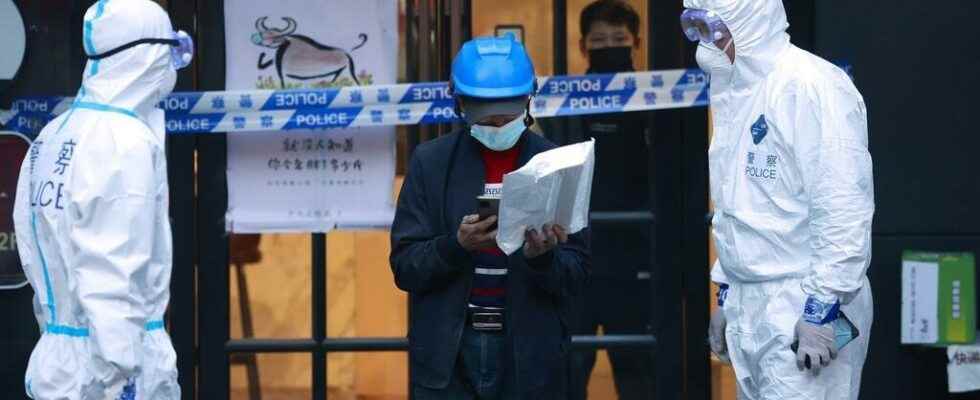Shanghai is cut in two this Monday, March 28. Faced with the rebound of the Omicron variant, the authorities announced Sunday evening the confinement of the eastern part of the Chinese economic capital. Since 5 a.m. this morning, residents have been asked not to leave their homes. Then it will be the turn of the western part.
From our correspondent in Beijing, Stephane Lagarde
On several occasions since the start of the epidemic resurgence, the Shanghai municipality has promised to avoid a total shutdown of the city, it is therefore a two-phase lockdown that applies to the Chinese economic capital. From this Monday, buses, subways, taxis and ferries can no longer cross the Huangpu River which marks the demarcation line of this new confinement.
Collective quarantine centers
Pudong lockdown(including Chongming, Jinshan, and Fengxian districts, and part of Songjiang and Minhang District): From 5am March 28 to 5am April 1.
Puxi lockdown: From 3am April to 3am April 5. pic.twitter.com/4TGNATxFF3— Shanghai Daily (@shanghaidaily) March 27, 2022
For the next four days, the nearly 6 million residents of Pudong, the east bank – including the districts of Hongming, Jinshan, and Fengxian, and part of the districts of Songjiang and Minhang – will remain confined to their neighborhoods. Then the 1er April, it will be the turn of Puxi, the west bank for 3 days. Most of the 25 million Shanghainese have already been tested in recent weeks. Obviously, these tests and containment located by residences, already applied to shenzhenShenyang and other megacities in China, are not enough to contain the spread of Omicron.
This new massive screening campaign should make it possible to identify positive cases and isolate them in places such as the Shanghai Universal Exhibition Center converted into a huge collective quarantine center. White boxes numbered in purple and cots await patients, mostly asymptomatic, as shown by a Twitter story from two Britons, the first positive foreign residents who keep a diary of their isolation on Twitter. For the moment, the contamination figures are far from those reported in other countries, especially in Europe. On Sunday, Shanghai reported nearly 11,500 Covid-19 infections since the outbreak resumed in early March, a record for China since 2020.
“Closed loop” factories
In an attempt to limit the economic impact of these travel restriction measures, the Shanghai government has declared that all companies based in Pudong could continue to operate either by telecommuting or by “ closed loop as the health authorities call it, in other words with limited staff confined indoors. A device intended in particular for factories. Local officials say it is imperative to keep the city’s port and financial hub open, to preserve the national economy, but also the functioning of the global supply chain.
Shanghai is often described as the gateway to eastern China with its access to the East China Sea. However, these new confinements risk disrupting operations at Yangshan, the world’s largest deep-sea port, as well as the assembly lines of Tesla and SMIC, China’s largest electronic chipmaker.
Zero Covid and #2020too
This announcement comes as schools are closed and some residences have already lived under confinement in recent days. The majority of residents observe the rules for preventing the epidemic without flinching, but the fatigue of “Zero Covid” is growing, especially on social networks. Growing discontent as China continues to implement its strategy to completely eliminate cases of infections.
The hashtag “Why can’t China lift health security measures like foreign countries?” “has recorded nearly 500 million views reports the specialized site What’s On Weibo. Footage also shows a rush on food shelves in some neighborhoods in anticipation of the “ lock down “, accompanied by humorous comments, often disillusioned under the hashtag #2020too. For some, this beginning of 2022 evokes a return two years back.
